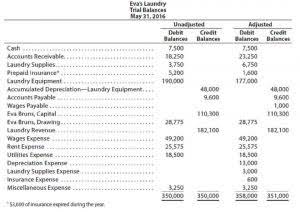What is Posting in Accounting? Definition, Steps, & Examples

Accruing tax liabilities in accounting involves recognizing and recording taxes that a company owes but has not yet paid. This is important for accurate financial reporting and compliance with… At the end of every accounting period, some transactions are missed from the records. The recording of such transactions in the books of accounts is known as adjusting entries. Such entries are usually made to adjust the income and expense accounts.

How is the Balance Column Used in the General Ledger?
- Chartered accountant Michael Brown is the founder and CEO of Double Entry Bookkeeping.
- The change gives firms more control over how they classify these assets and may accelerate corporate adoption.
- It helps produce financial statements showing a company’s real situation.
- Following proper separation of duties helps the posting process work smoothly, according to University of Florida’s guidelines.
- The individual accounts each (like Rent Expense and Cash) have a Ledger where transactions are entered.
- A number of sub-postmasters were convicted of theft and false accounting while using the Capture IT system in the 1990s.
Summarizing refers to the preparation of a trial balance from the debit and credit balances of the ledger accounts. The double-entry bookkeeping system aims to prevent mistakes through a balanced method. Meticulous ledger posting practices and ledger entry reviews ensure accuracy. This upholds the integrity of financial transaction categorization. Every entry moves from the general journal to law firm chart of accounts electronic ledger posting.
- Companies must follow GAAP and meet deadlines from the IRS, SEC, and FASB.
- This proves the accuracy of the accounting records at the end of the trading period.
- Automation increases efficiency and reduces errors in financial reporting.
- The posting of opening entries is according to the balance of their accounts.
- Also, with the posing in a ledger, the arithmetic accuracy of the accounts can be verified, and the balances can be analyzed thoroughly to maintain the proper and accurate records.
Posting From Journal to Ledger
The second step in the accounting cycle is journalizing, which involves recording all transactions in the general journal. The posting of opening entries is according to the balance of their accounts. In chapter 5, you have studied that all what is a posting in accounting assets have debit balance so the account of each asset opened in the ledger will have the opening balance on the debit side with the words “To balance brought forward”. Yes, posting must follow Generally Accepted Accounting Principles (GAAP). GAAP ensures that financial reports are accurate and consistent.
- Postings can be made (1) at the time the transaction is journalized; (2) at the end of the day, week, or month; or (3) as each journal page is filled.
- Below is an example of what the T-Accounts would look like for a company.
- Someone on our team will connect you with a financial professional in our network holding the correct designation and expertise.
- So for example a small business might operate a sales invoicing module.
- The accounting cycle is a process businesses use to track their financial performance over a specific period of time.
Ask Any Financial Question

Investors, stockholders, financial-rating agencies and the Internal Revenue Service want to know the information posted in ledgers at the end of the fiscal quarter or year for various reasons. For example, investors want to see the income and liabilities you posted in the general ledger to evaluate the health of the company. Investors are not concerned with the information you recorded in your accounting journals. The accounting cycle involves updating, changing and verifying financial transactions during the course of business operations.
Bookkeeping

These entries record the transaction’s effect on the accounting question in the accounting system. A posting is normally carried out following the preparation of a journal entry from the underlying transaction information, and is step three in the accounting cycle. In the General Journal, when an account has been posted to an individual account, the number assigned to that net sales account is listed in the Post Ref column to indicate that entry has been posted. In the General Ledger, for the corresponding transaction, the page number of the General Journal is entered to signify the page where the transaction can be found. When we studied about real accounts, you understood that there are some accounts that do not vanish after the accounting period ends. The balances of assets and liabilities are carried forward to the next accounting year.
Step #3 – Enter the Name and Account in General Ledger with Details
This process involves updating the ledger accounts with the relevant financial information, such as debit and credit entries, to ensure that the company’s financial records are accurate and up-to-date. Once the transaction is recorded, it must be transferred to the ledger accounts. This is where all of the journal entries recorded in the general journal are transferred to the individual account ledgers. You can think of the posting process like taking the journal entries and transferring them to T-accounts.
